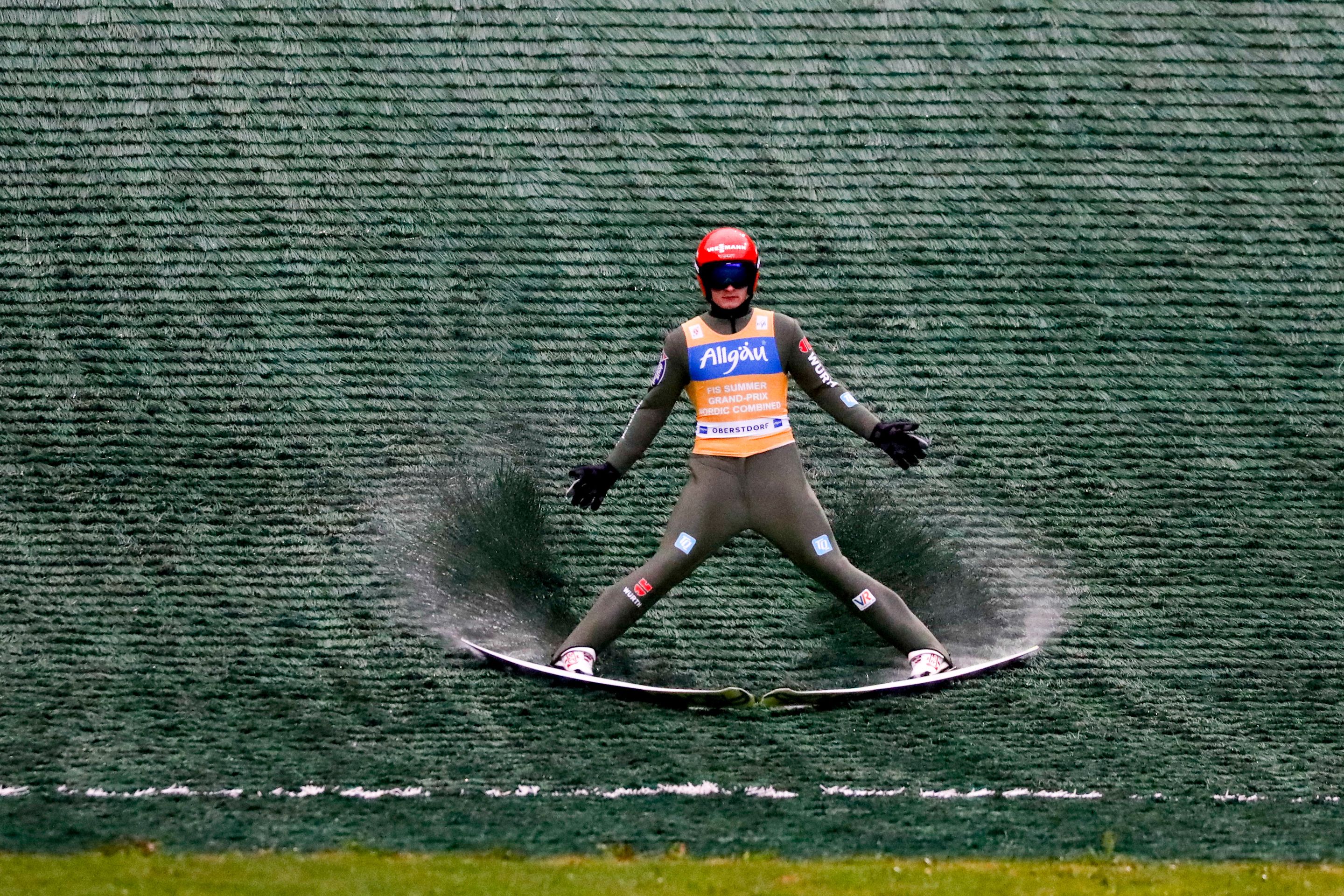Nordic Combined 101: How Ski Jumping changes with the seasons
Aug 05, 2025·Nordic Combined)
Welcome back to Nordic Combined 101, where we explore the different elements that make up our unique sport. Last week, we looked at roller skiing and how it helps athletes to keep their shape for cross-country skiing in winter.
This time, we’re heading to the Ski Jumping hill — but with a twist. Just like cross-country, Ski Jumping isn’t just a winter activity.
Thanks to specially designed plastic mats, athletes can train and compete in summer, too. We’ll explore the key differences between jumping on snow and on plastic, how each surface affects the glide and feel, and why year-round ski jumping is essential for the sport.

From snow to plastic
Ski jumping may be best known as a winter sport, but thanks to clever engineering, athletes can train and compete all year long. While the technique, equipment and thrill remain the same, the surfaces and preparation of the hill change dramatically between summer and winter:
In winter, ski jumpers land on meticulously prepared snow. The hill crew packs and grooms the snow to create a smooth, hard surface that ensures consistent glide and safety.
In summer, the white landing slope is replaced by green plastic mats made primarily from polypropylene, a durable, weather-resistant thermoplastic. These mats are designed to mimic the glide of snow, allowing for realistic training conditions in warm weather. When viewed up close, they are made up of thousands of thin plastic rods that resemble the texture of snow.

The role of water
Just like snow needs to be prepared in winter, plastic mats need special treatment in summer. Before and during use, water is sprayed onto the mats and inrun tracks. This creates a slick surface that reduces friction, allowing skis to glide smoothly and safely. Without water, the mats would feel much slower and rougher.
Inrun tracks: Ice vs. ceramic
In winter, the inrun – the ramp leading to the takeoff – is built from ice, with water being frozen into the track to form a solid, fast surface.
In summer, the inrun is made from porcelain or ceramic tracks. These are also watered to create a similar glide to ice, ensuring athletes can achieve competitive speeds.

Although the Ski Jumping equipment, like skis, suit and helmet, is identical in summer and winter – air temperature, surface texture, and glide all influence speed, flight, and landing. Still, the year-round availability means jumpers can refine their skills without waiting for the first snowfall.




